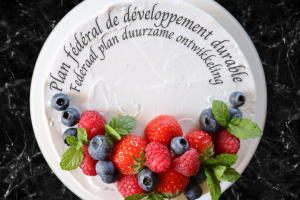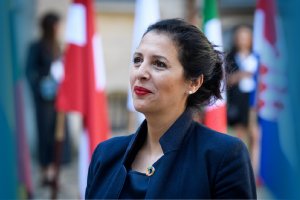EURACTIV | Let us not replace one dependence with another
The soaring price of rare metals could become a crisis on a par with energy costs if political leaders do not take action now, writes Zakia Khattabi.

Crises follow one another and they have in common that they all demonstrate the need to work towards more anticipation, prevention, and strategic foresight – whether it is to prevent these crises or to be able to cushion the violence of their impact on our daily lives quickly and effectively.
In addition to the explosion of energy costs that we are experiencing today and to which we are responding with and in emergency, another crisis is looming: the soaring prices of rare metals.
If not addressed today, it will potentially have the same consequences that we are currently experiencing with energy. The prospect of the development of renewable energies, the extension/development of nuclear power, the electrification of mobility, and our digital needs inevitably imply an increase in the demand for rare metals.
It must therefore urge us to anticipate new vulnerabilities related to the availability of rare earths and critical metals. As with energy, the stakes are environmental, economic, and geopolitical, given our dependence on a limited number of producing countries (China, the Democratic Republic of Congo, etc.).
The excessive use of raw materials was already highlighted in the “Limits to Growth” report of the Club of Rome in 1972.
But it was not until about 10 to 15 years ago, with the development of digital technologies, that researchers and scientists began to look more closely at the flow and use of certain raw materials, and the concept of ‘critical raw materials’ was born.
In 2011, the European Commission published for the first time a list of fourteen critical raw materials for the European economy. Since then, this list has continued to grow, so much so that in 2020 there were around thirty materials.
Their “critical” aspect is not so much due to the geological reserves, as to their scarcity resulting from the “laws” of the market and geopolitical relations.
It should also be noted that there are other raw materials (for example quartz sand and nickel) which are not on this list but which we use for our production and consumption methods, and which are also becoming scarce. Several reports, books and scientific articles highlight the “resource wars” that are taking place on a global scale.
Europe cannot afford to be a passive witness to such a development. Janez Potočnik, former European Commissioner and co-chair of the International Resource Panel, has repeatedly affirmed in recent years that circular economy is the missing link in the fight against climate change.
For my part, I would add ‘and for the energy independence of the European Union’. If we do not start now addressing the scarcity of raw materials, at the EU level and in each member state, we risk rendering our transition to a low-carbon society extremely expensive, if not impossible.
Our collective challenge: to respond to this crisis by investing in innovation to produce these rare metals in Europe on the one hand, while developing an ambitious circular economy on the other.
By preserving the use value of products, components, and materials in the economy for as long as possible through intelligent product design, reuse and/or shared use of products, repair, reconditioning, recovery of spare parts or recycling, the circular economy guarantees long-term sustainability.
It maintains the extraction and consumption of natural resources, the emission of waste and pollutants and the use of territories within the framework of planetary boundaries.
Belgium has its own circular economy plan. It includes twenty-five measures, ranging from the ecodesign of products to the elimination of single-use products and an indicator of product repairability at the time of purchase.
I have also put on the Government’s table the creation of an observatory to analyse the flow of raw materials to, from and within Belgium, including price developments on the world market. But we must go further, much further.
The ambition must be European.
It has become urgent to invest massively in the research and development of alternative materials, but also to reduce the demand for raw materials. We need an investment plan to develop the circular economy at European level that rises to this essential challenge for the future of us all. To govern is to foresee.


